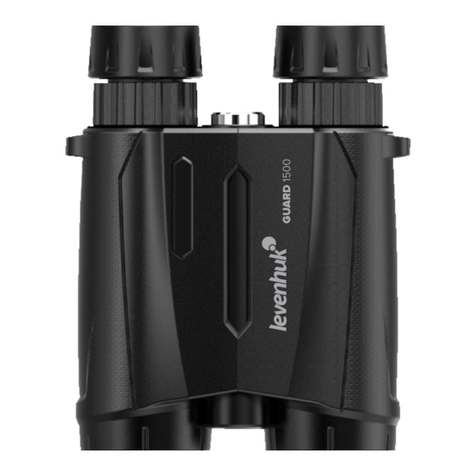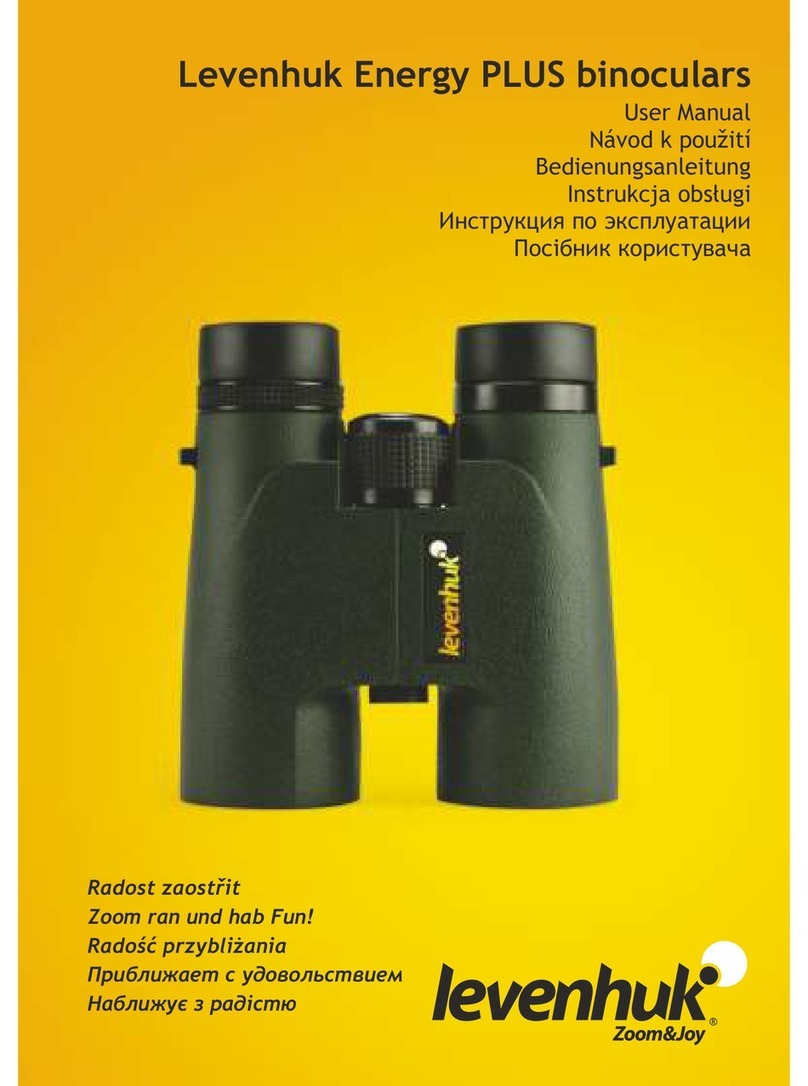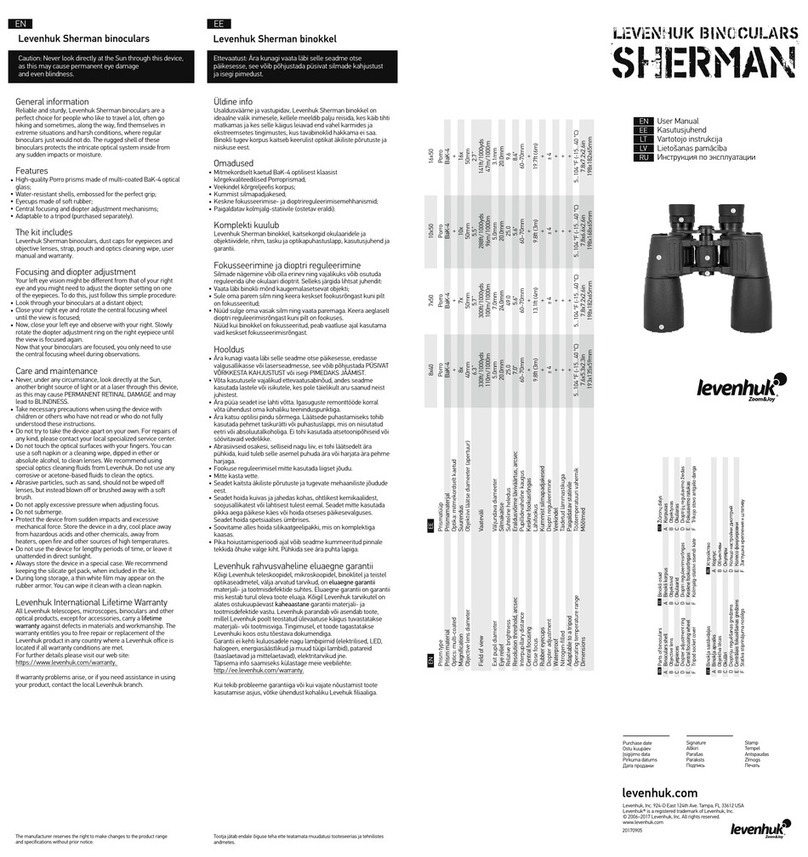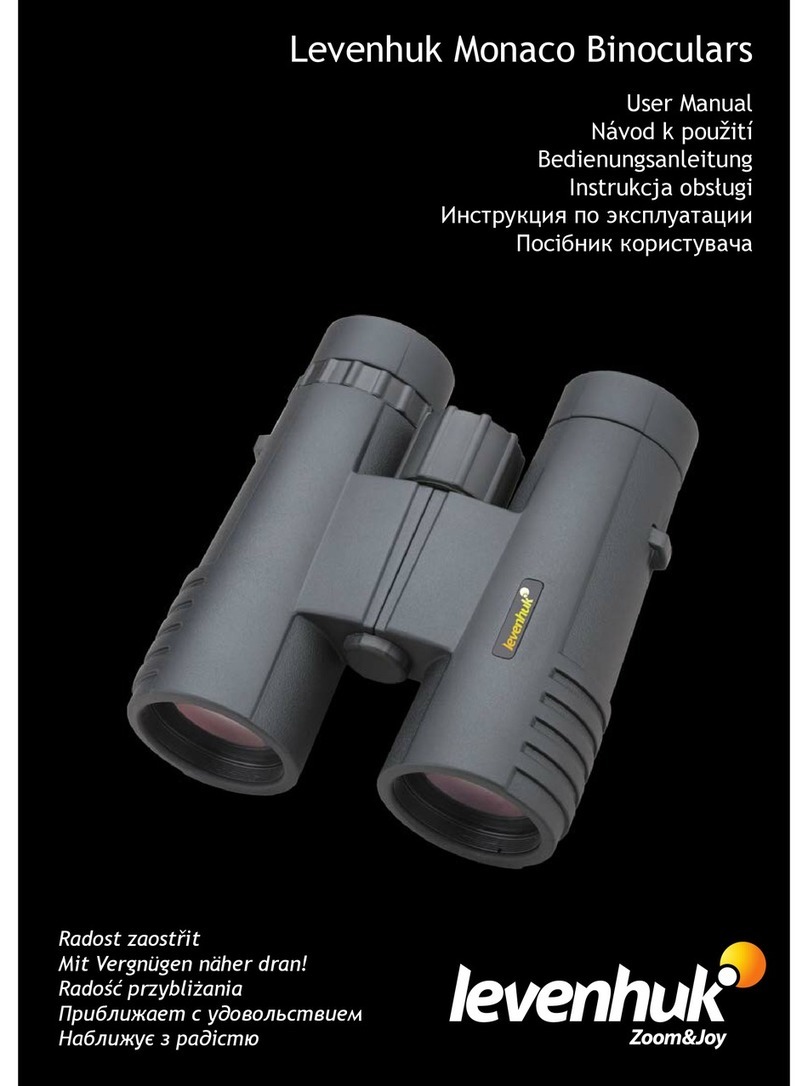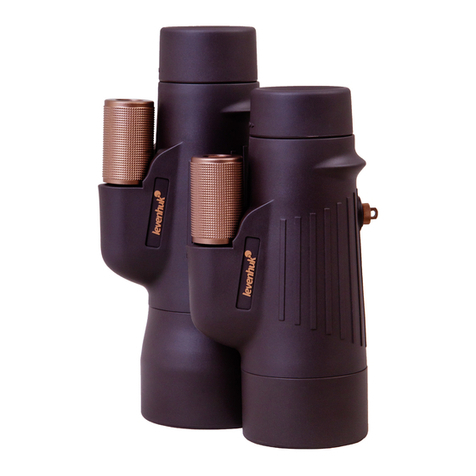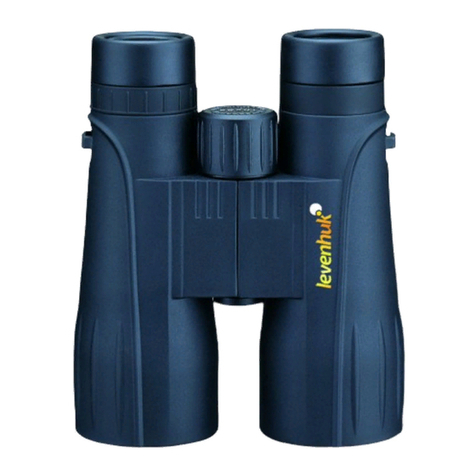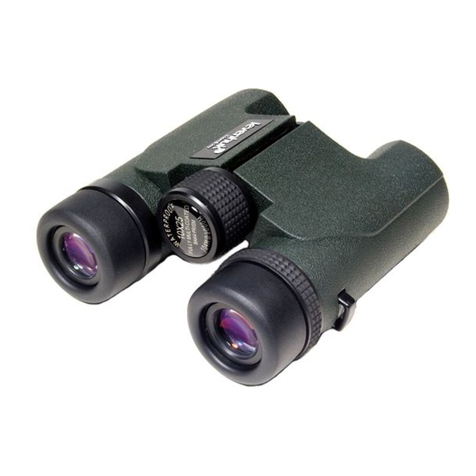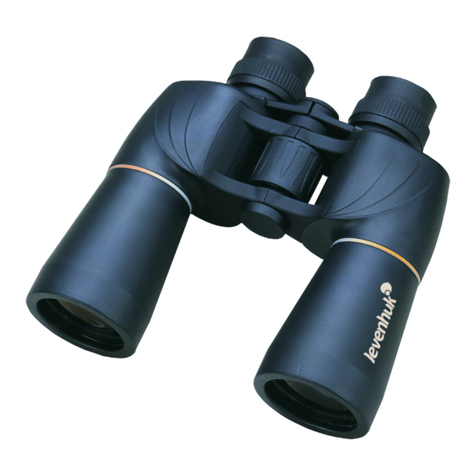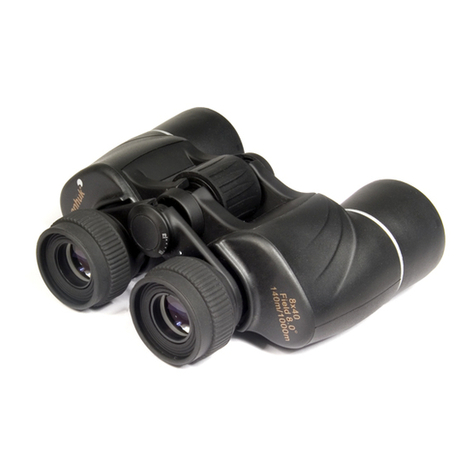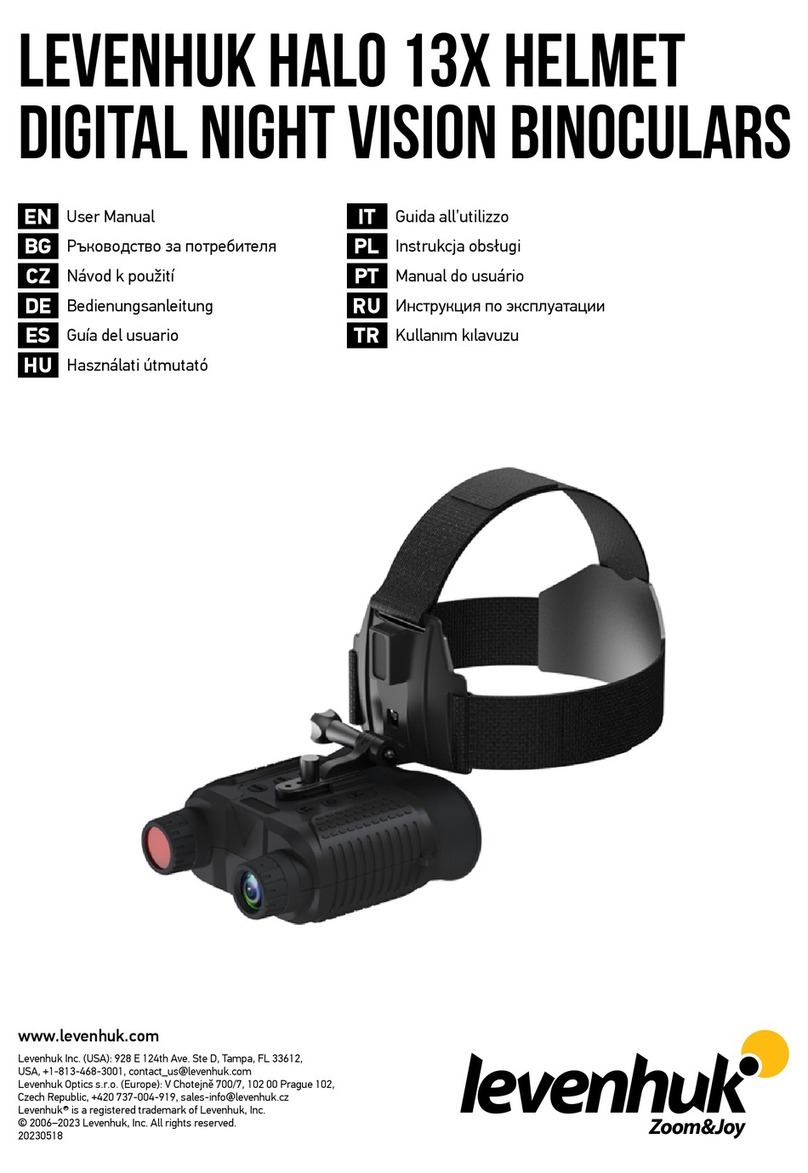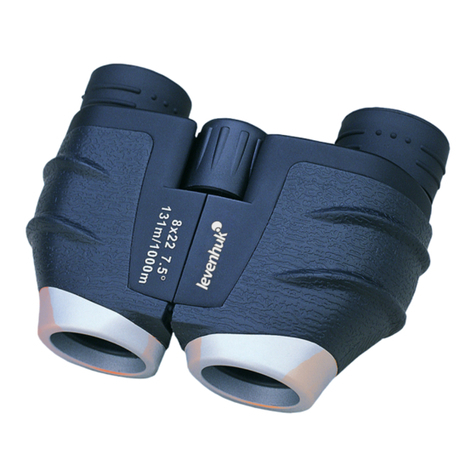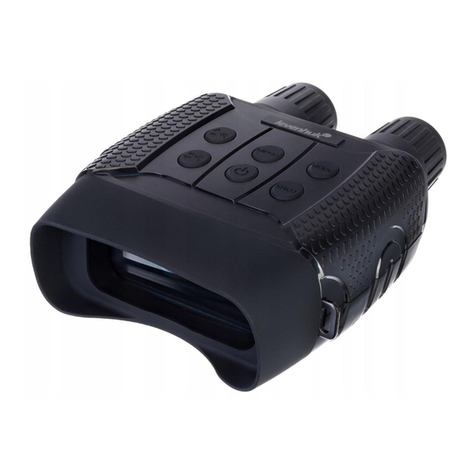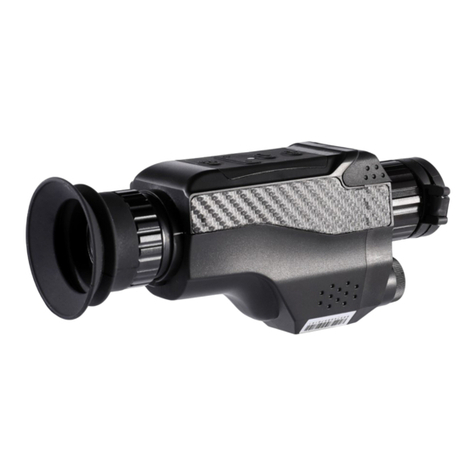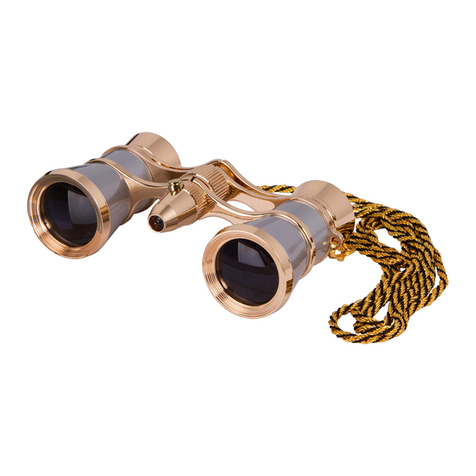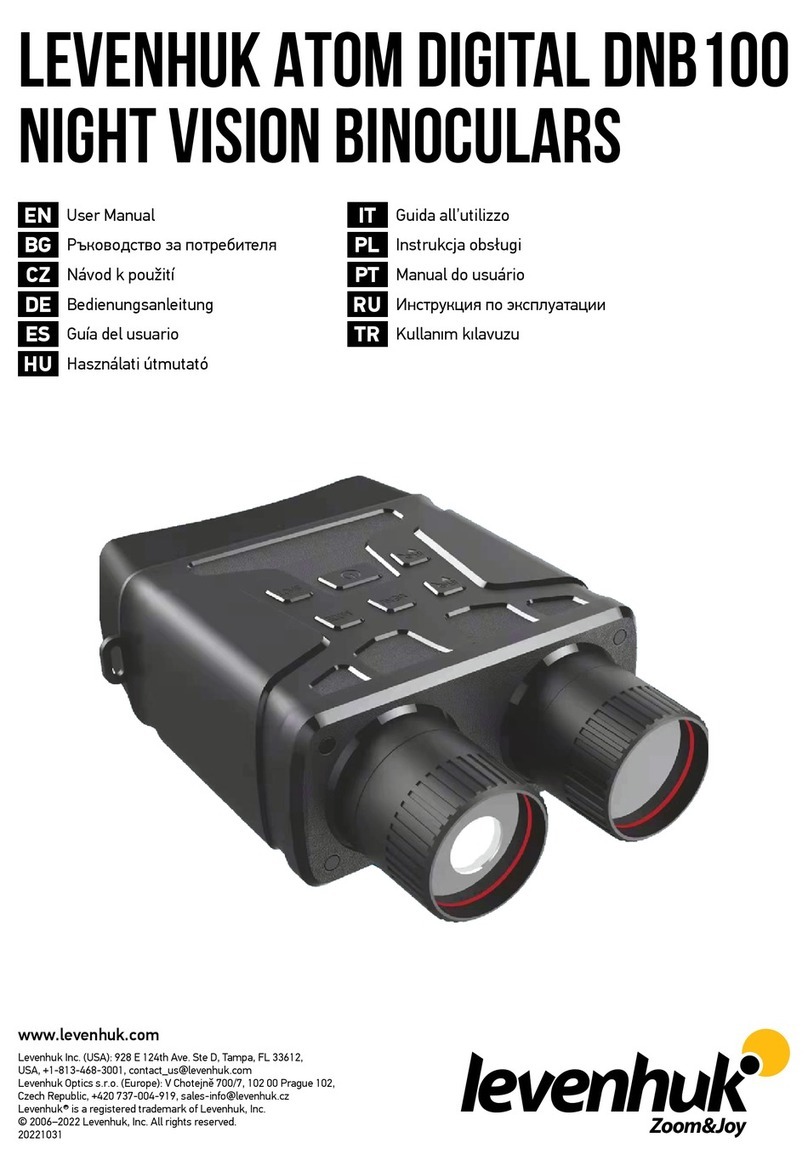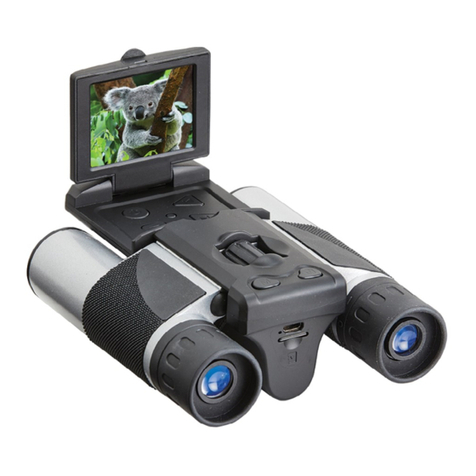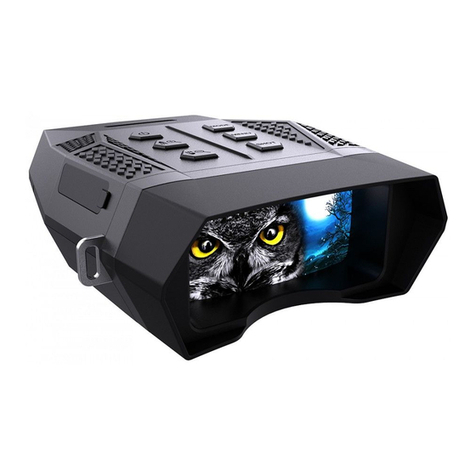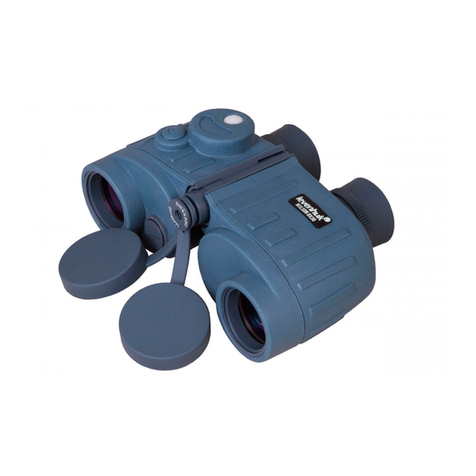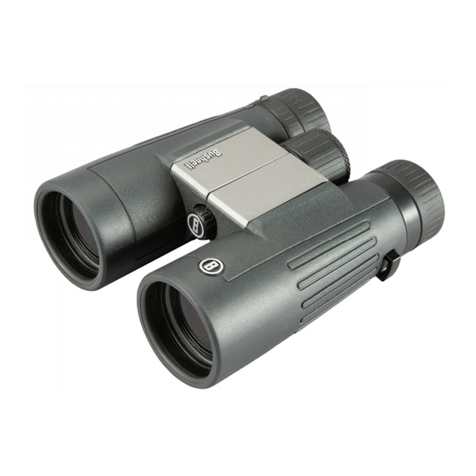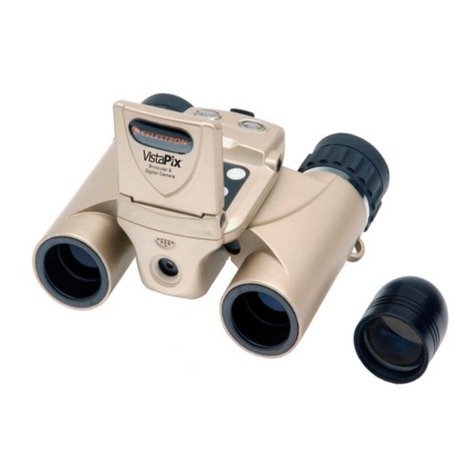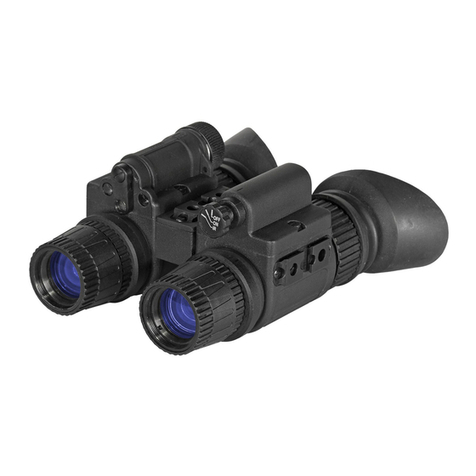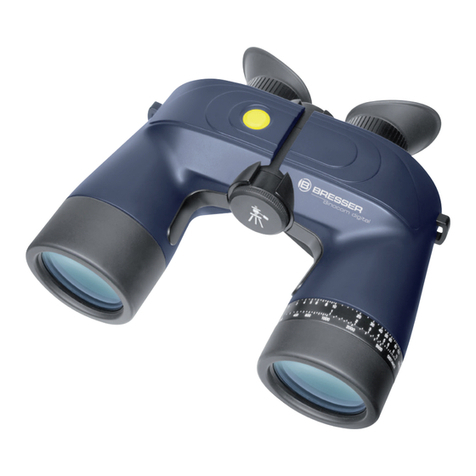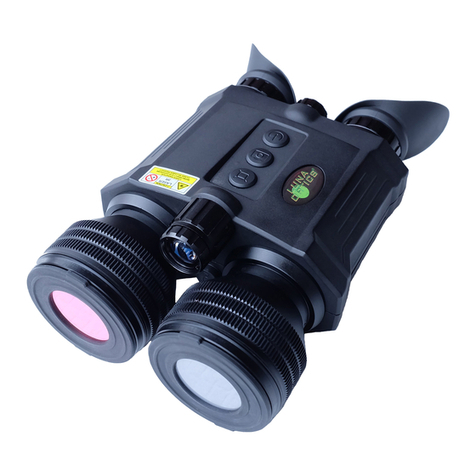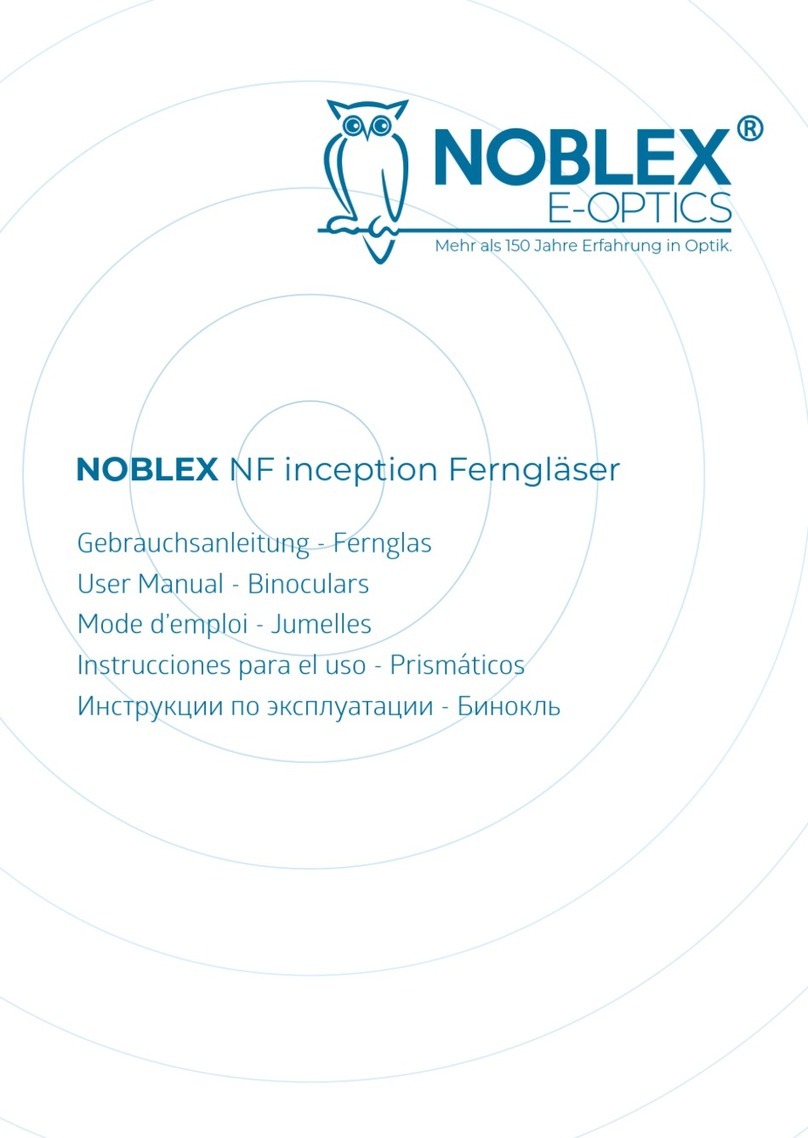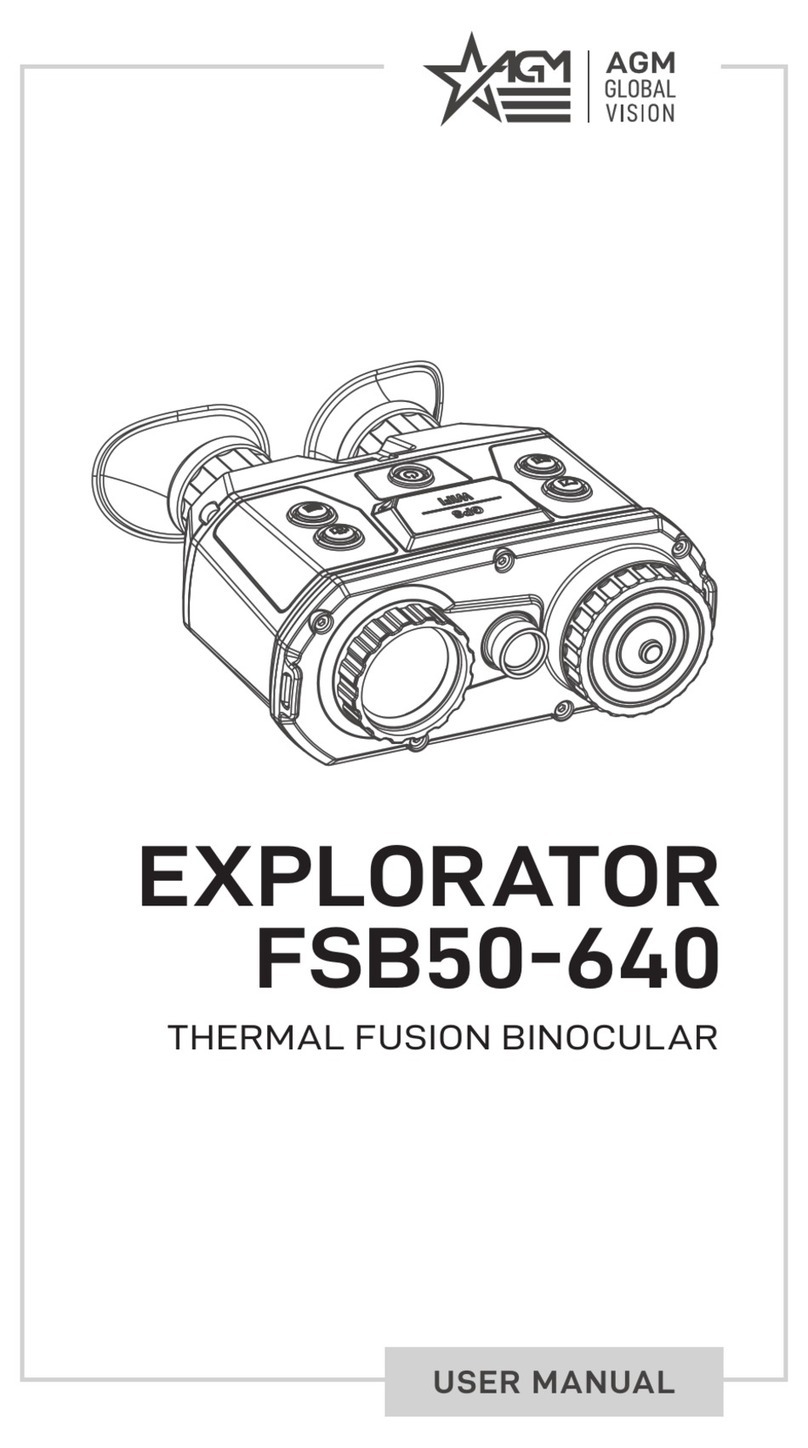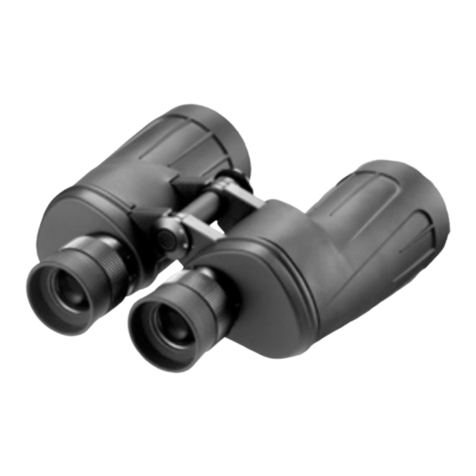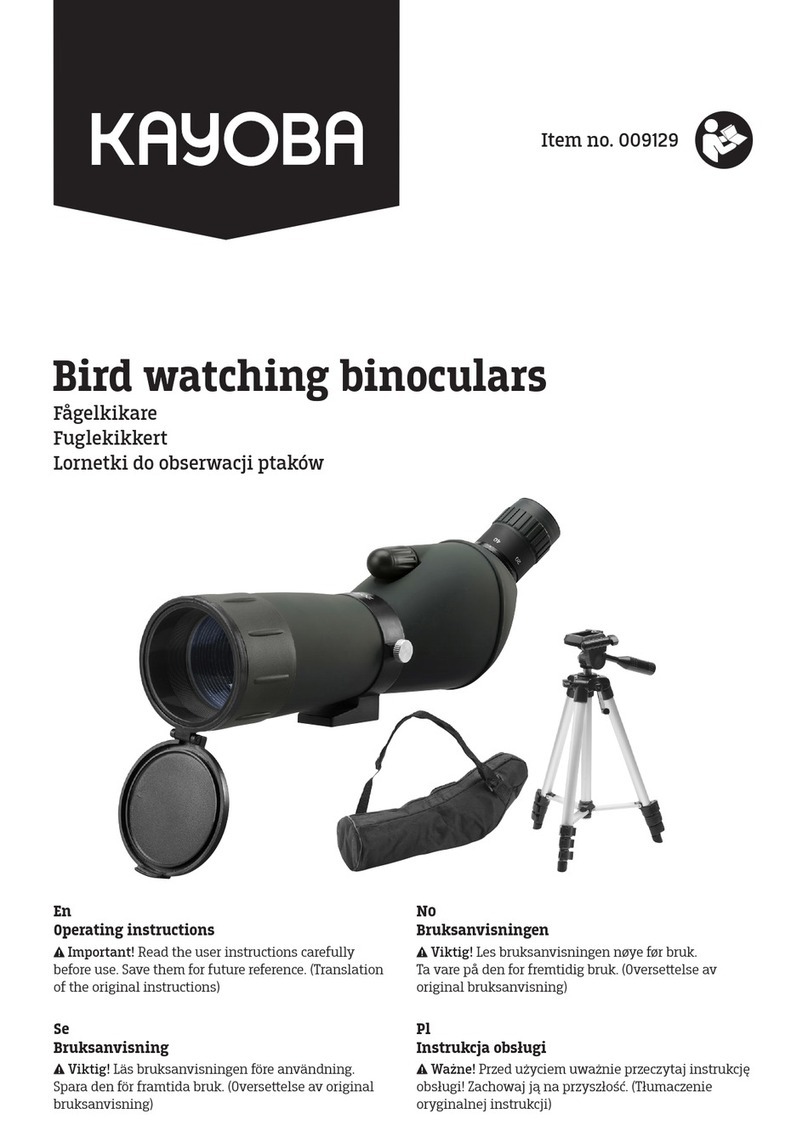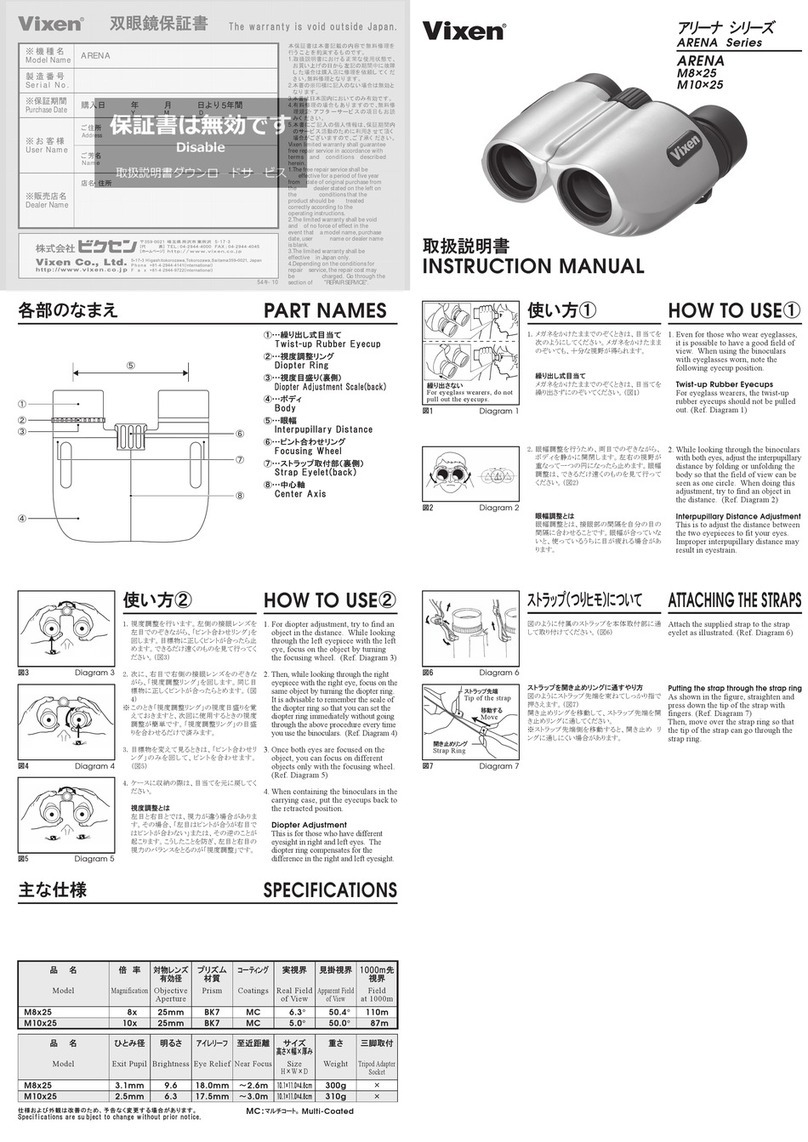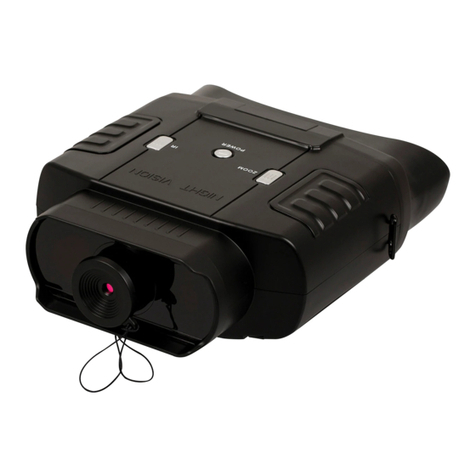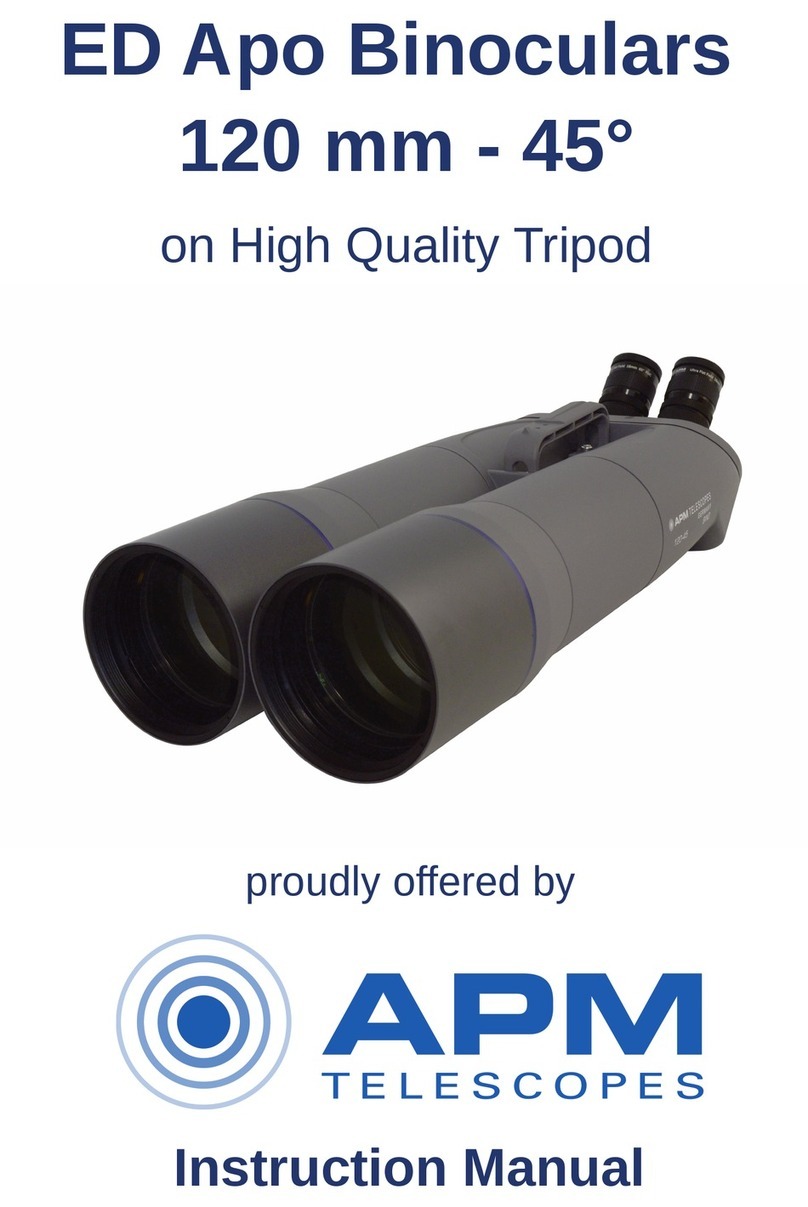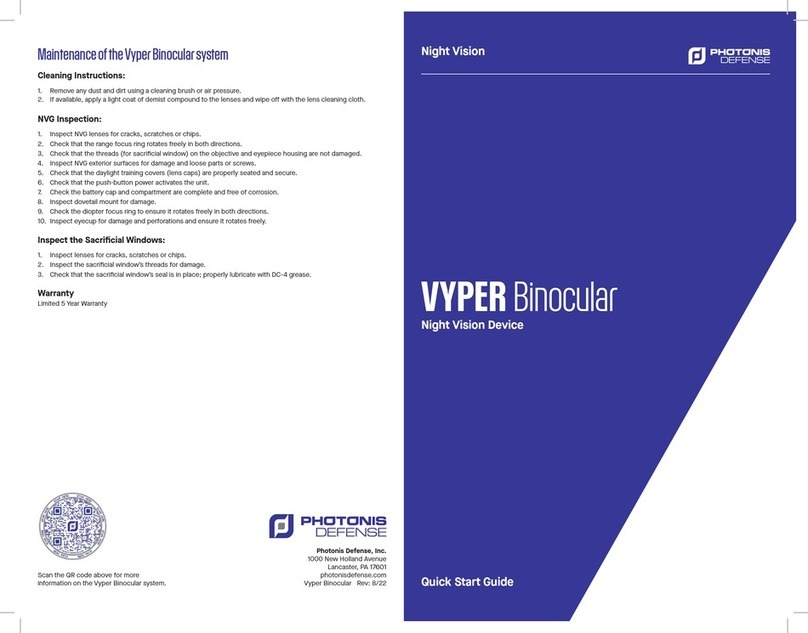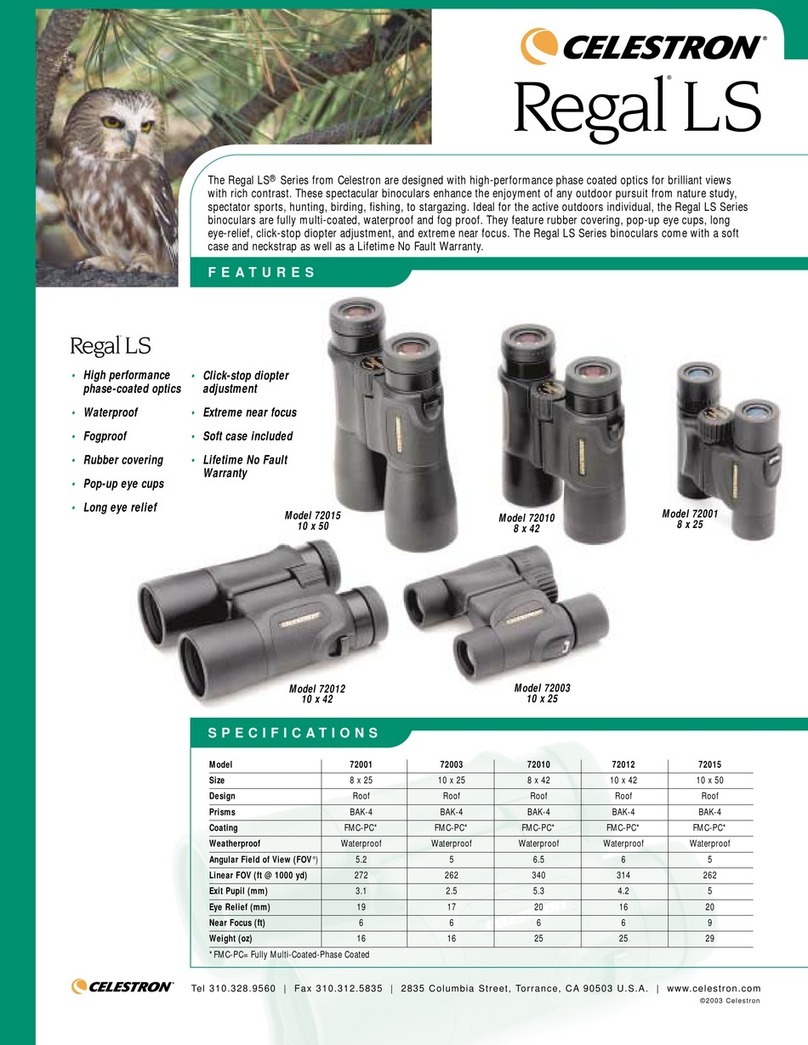Care and maintenance
•Never, under any circumstance, look directly at the Sun, another bright source of light or at a laser through this device, as this
may cause PERMANENT RETINAL DAMAGE and may lead to BLINDNESS.
• Take necessary precautions when using the device with children or others who have not read or who do not fully understood these
instructions.
•Do not try to take the device apart on your own. For repairs oany kind, please contact your local specialized service center.
•Do not touch the optical suraces with your ngers. You can use a sof napkin or a cleaning wipe, dipped in ether or absolute alcohol, to
clean lenses. We recommend using special optics cleaning uids rom Levenhuk. Do not use any corrosive or acetone-based uids to clean
the optics.
•Abrasive particles, such as sand, should not be wiped olenses, but instead blown oor brushed away with a sof brush.
•Do not apply excessive pressure when adjusting ocus.
•Protect the device rom sudden impacts and excessive mechanical orce.
•Store the device in a dry, cool place away rom hazardous acids and other chemicals, away rom heaters, open re and other sources o
high temperatures. Do not use the device or lengthy periods otime, or leave it unattended in direct sunlight. Always store the device in a
special case.
•We recommend keeping the silicate gel pack, iincluded in the kit.
• During long storage, a thin white lm may appear on the rubber armor. You can wipe it clean with a clean napkin.
•Seek medical advice immediately if a small part or a battery is swallowed.
Battery safety instructions
•Always purchase the correct size and grade obattery most suitable or the intended use.
•Always replace the whole set obatteries at one time; taking care not to mix old and new ones, or batteries odierent types.
•Clean the battery contacts and also those othe device prior to battery installation.
•Make sure the batteries are installed correctly with regard to polarity (+ and -).
•Remove batteries rom equipment that is not to be used or an extended period otime.
•Remove used batteries promptly.
•Never attempt to recharge primary batteries as this may cause leakage, re, or explosion.
•Never short-circuit batteries as this may lead to high temperatures, leakage, or explosion.
•Never heat batteries in order to revive them.
•Remember to switch odevices afer use.
•Keep batteries out othe reach ochildren, to avoid risk oingestion, suocation, or poisoning.
•Do not disassemble batteries.
•Utilize used batteries as prescribed by your country laws.
Levenhuk International Lifetime Warranty
All Levenhuk telescopes, microscopes, binoculars and other optical products, except for accessories, carry a lifetime warranty against defects
in materials and workmanship. Lietime warranty is a guarantee on the lietime othe product on the market. All Levenhuk accessories are
warranted to be free of defects in materials and workmanship for six months rom date oretail purchase. The warranty entitles you to ree
repair or replacement othe Levenhuk product in any country where a Levenhuk oce is located iall warranty conditions are met. For urther
details please visit our web site: www.levenhuk.com/warranty/
Iwarranty problems arise, or iyou need assistance in using your product, contact the local Levenhuk branch.
Levenhuk, Inc. 924-D East 124th Ave. Tampa, FL 33612 USA
Levenhuk®is a registered trademark of Levenhuk, Inc.
© 2019 Levenhuk, Inc. All rights reserved.
www.levenhuk.com
20181225

